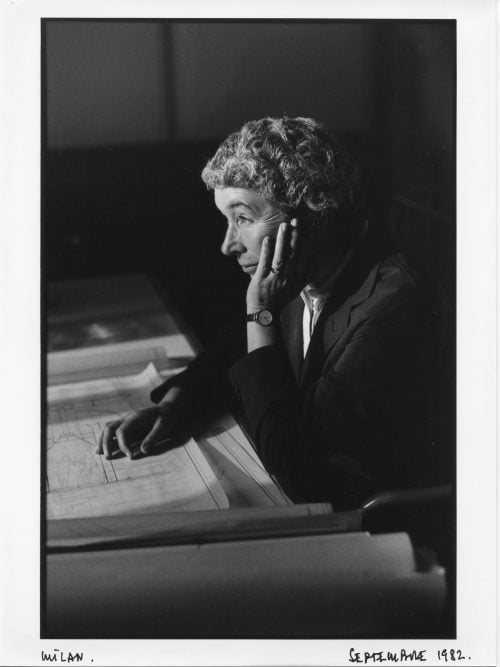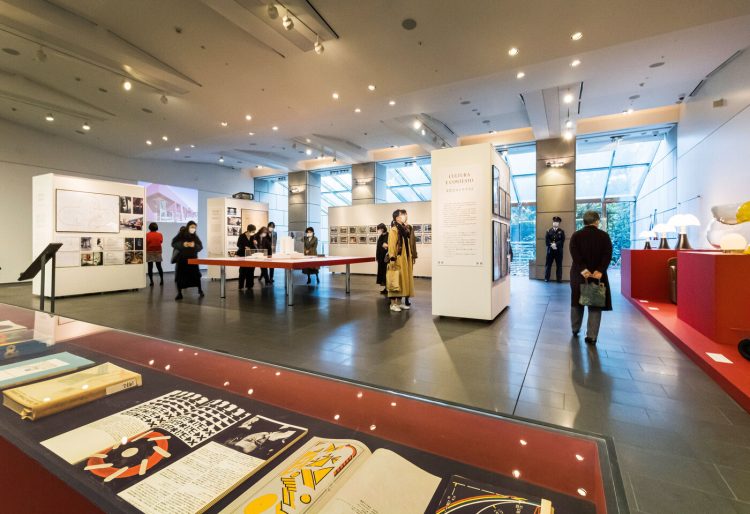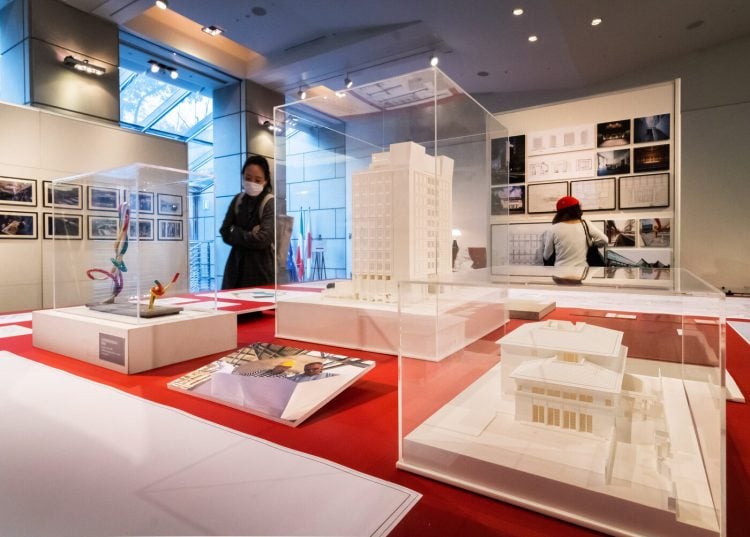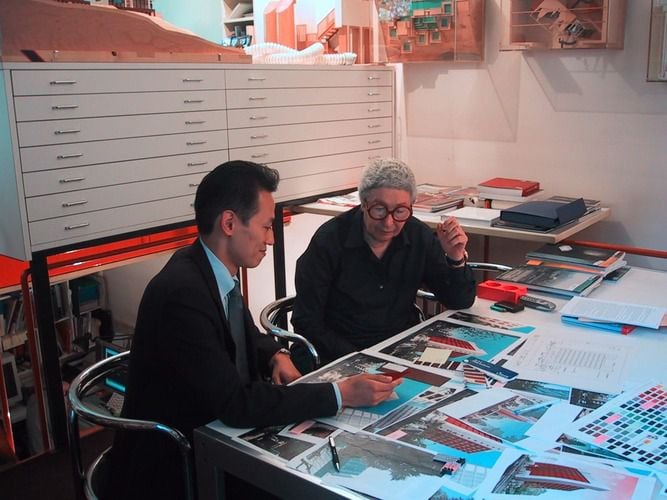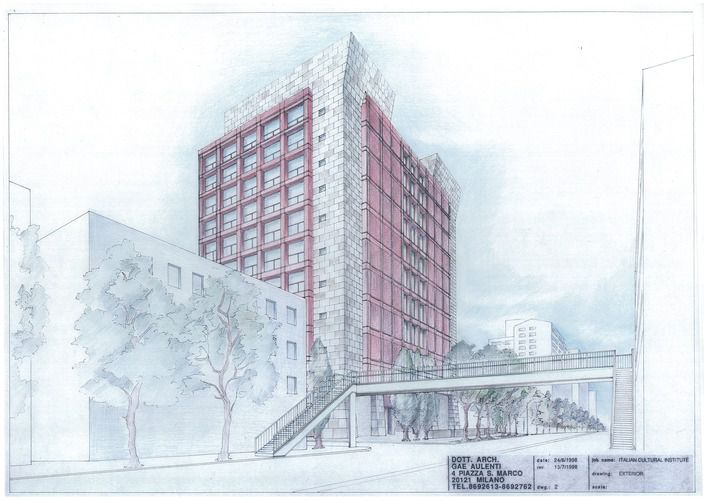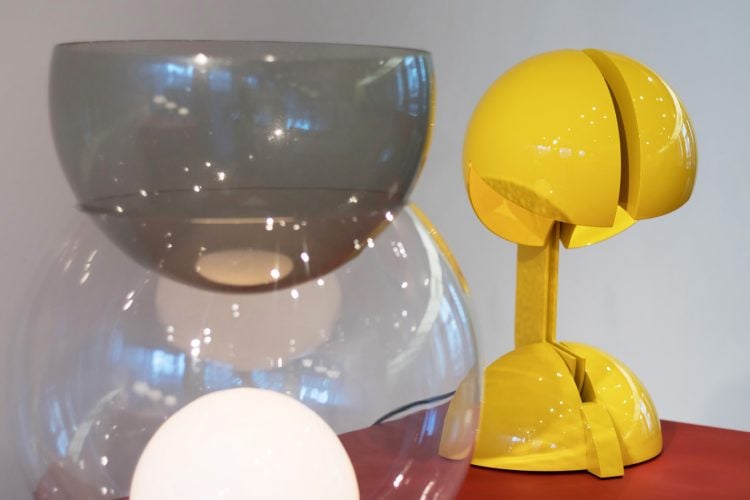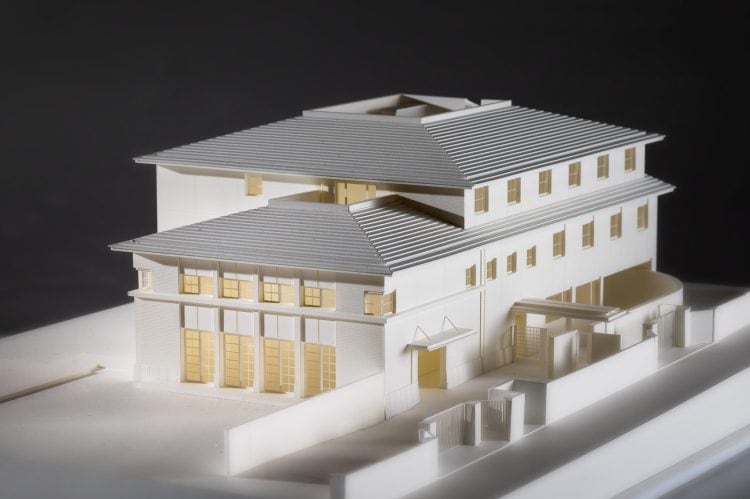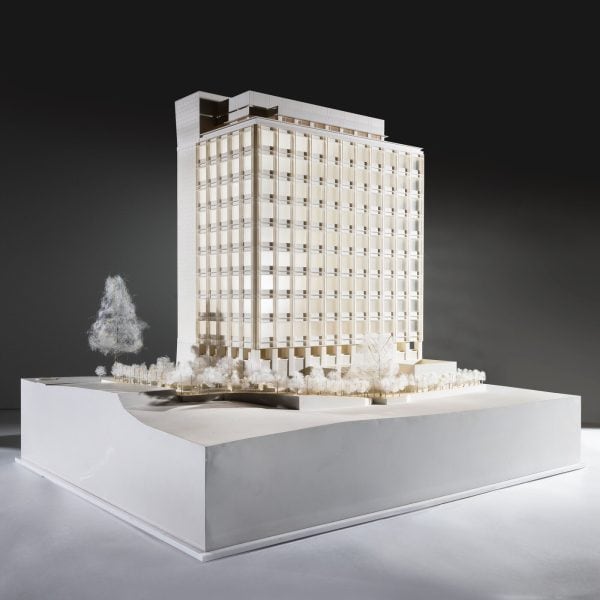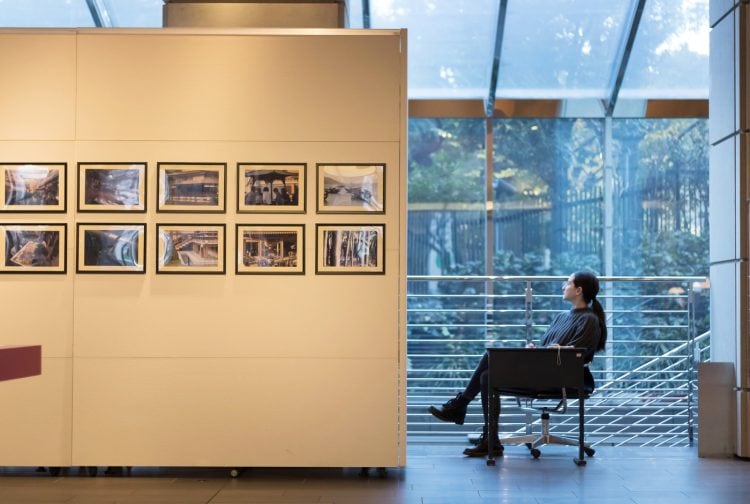Exhibition: "Gae Aulenti. Uno sguardo sul Giappone e sul mondo"
The exhibition dedicated to Gae Aulenti was inaugurated last December 11, in the presence of H.E. the Italian Ambassador Gianluigi Benedetti. A symposium moderated by prof. Jinnai Hidenobu recounted the life and professional experiences of the architect who designed the Italian Cultural Institute in Tokyo and the Chancellery of the Italian Embassy. The tenth anniversary of her death is an opportunity to rediscover the work of an Italian architect still little known in Japan, despite the prestigious Praemium Imperiale received in 1991.
Versatile architect and tenacious woman, among the first to deal with a profession considered "masculine," Gae Aulenti was also a product designer, stage designer, and urban planner. She argued that "a modern architect must know how to design everything, from furniture to the city because everything is connected." Among her most famous works is the re-adaptation from the railway station to the museum of the Musée d'Orsay in Paris, Palazzo Grassi in Venice, and the Asian Art Museum in San Francisco.
Prof. Yokote Yoshihiro, in her contribution to the exhibition catalog, describes the architect's professional career. Born in 1927, she decided to study architecture to deviate from the path already traced for her by her family. For ten years, 1955-1965, she collaborated with Casabella under the direction of Ernesto Nathan Rogers of the BBPR Group. She was influenced by the Neoliberty movement, evident in her clever and refined use of curves. For example, the 1962 Sgarsul rocking chair, designed for Poltronova, is characterized by a continuous curved line.
In 1964 she designed the lamp Giova for FontanaArte, a centripetal object that is a lamp but also a planter, an aroma diffuser, a sculpture, and more. From this and other works emerges the figure of a professional who loves to deal with other disciplines, taking inspiration from them for her work as an architect.
"I have always tried to make my work unclassifiable, not to accept abstract rules, not to confine myself to specializations, but instead to deal with different disciplines. The theatre, for example, to be able to analyze literary and musical texts. The design of objects as a complementary world to architectural spaces. Architecture as a basic passion where theory and practice must intertwine. I believe architecture is an interdisciplinary intellectual work, a work in which building science and art are extremely integrated."
Some time ago, I wrote an essay on this topic titled "Manifesto of heteronomous architecture." In it, I investigated the interdependence between architecture and other disciplines. In summary, an architect must have a complete and not a partial field of observation.
In 1967 she created the showroom for Olivetti, inspired by an urban square. In line with the definition coined by Rogers, "from the spoon to the city" - which defined the operational sphere of architects, transversal to all project scales - Aulenti translated the scale of the city into that of interior design, proposing the concept of "urban interior." Her spacing between the various scales and typologies of design led her to devote herself to the theater in the following years.
After Rogers died in 1970, Aulenti detached from her master and opened her studio. Subsequently, she won the competition for the Musee d'Orsay in Paris, the project that brought her to international prominence. It was an intervention project on an existing building. The project is considered a watershed moment in the history of modern architecture for two reasons. For the functional conversion of a modern work and the client's decision to entrust this project to a female architect.
Silvana De Maio - Director of the Italian Cultural Institute in Tokyo - on the opening Symposium, said that the idea for this exhibition was born thanks to the exciting documentary Illuminate, dedicated to the work of Gae Aulenti. With careful research, the organizers found the architect Tokuya Osamu of Kajima Design, who had worked on the project with Aulenti for nine years. Osamu told the story of the two projects entrusted to the architect Aulenti by the Italian government.
In an era when email or video calls did not yet exist, project meetings were in person and very rare due to the distance. The architect's first proposal was delivered via DHL in the form of an A4 sheet containing a black-and-white perspective, where the image that the future Cultural Institute would have been clear. The next step was a new perspective, this time in color, where the red that now characterizes the facade of the building would appear. It was the RAL3011, which would have created many problems for the architect in the following period. The neighbors did not appreciate the vivacity of the color, and a heated debate arose, which also involved politics. In an interview, Aulenti recounts that she was even offered money to change the color, but without success. The motivation was clear. The color was a tribute to Japan and to the red of her lacquers, the same red of a bowl she kept in her studio in Milan.
In a country characterized by light and impermanent architecture, Aulenti preferred to take inspiration from the solemnity of the wall fortifications of the imperial palaces, perhaps the only elements of traditional Japanese architecture that come close to the solemn presence of Italian architecture. The rhythm of the squares on the facade and the internal cladding panels' design recall the movable partitions of Japanese houses (shoji). All these elements demonstrate her attention to the genius loci and her understanding of traditional architecture and culture as an inspiring element of modernity. The approach is typically Italian, of continuity with tradition, the same affirmed by Rogers in her direction of Casabella.
In this regard, she said: "the architecture in which I would like to recognize myself derives from three fundamental capacities of an aesthetic and not a moral order. The first is analytical, in the sense that we must know how to recognize the continuity of both conceptual and physical urban and geographical traces as specific essences of architecture. The second is synthetic, i.e., learning how to operate the synthesis necessary to make architecture principles a priority and evident. The third is the prophetic one, typical of artists, poets, and inventors. "
Nina Artioli, Aulenti's granddaughter, is the curator of the exhibition and the Milanese archive dedicated to the architect. In your contribution to the symposium, she outlined the figure of a curious, enthusiastic, and rebellious female architect who has measured herself over the years with many forms of expression associated with architecture.
The photos taken by Aulenti during her trip to Japan in 1971, displayed in the exhibition, tell of her use of photography as a research tool to guide his work as an architect. Aulenti created her unique point of view on architecture thanks to her love of travel, her ability to know how to listen to others, and her infinite curiosity.
She said, "I'm lucky because I enjoy doing my job."

 English
English 日本語
日本語